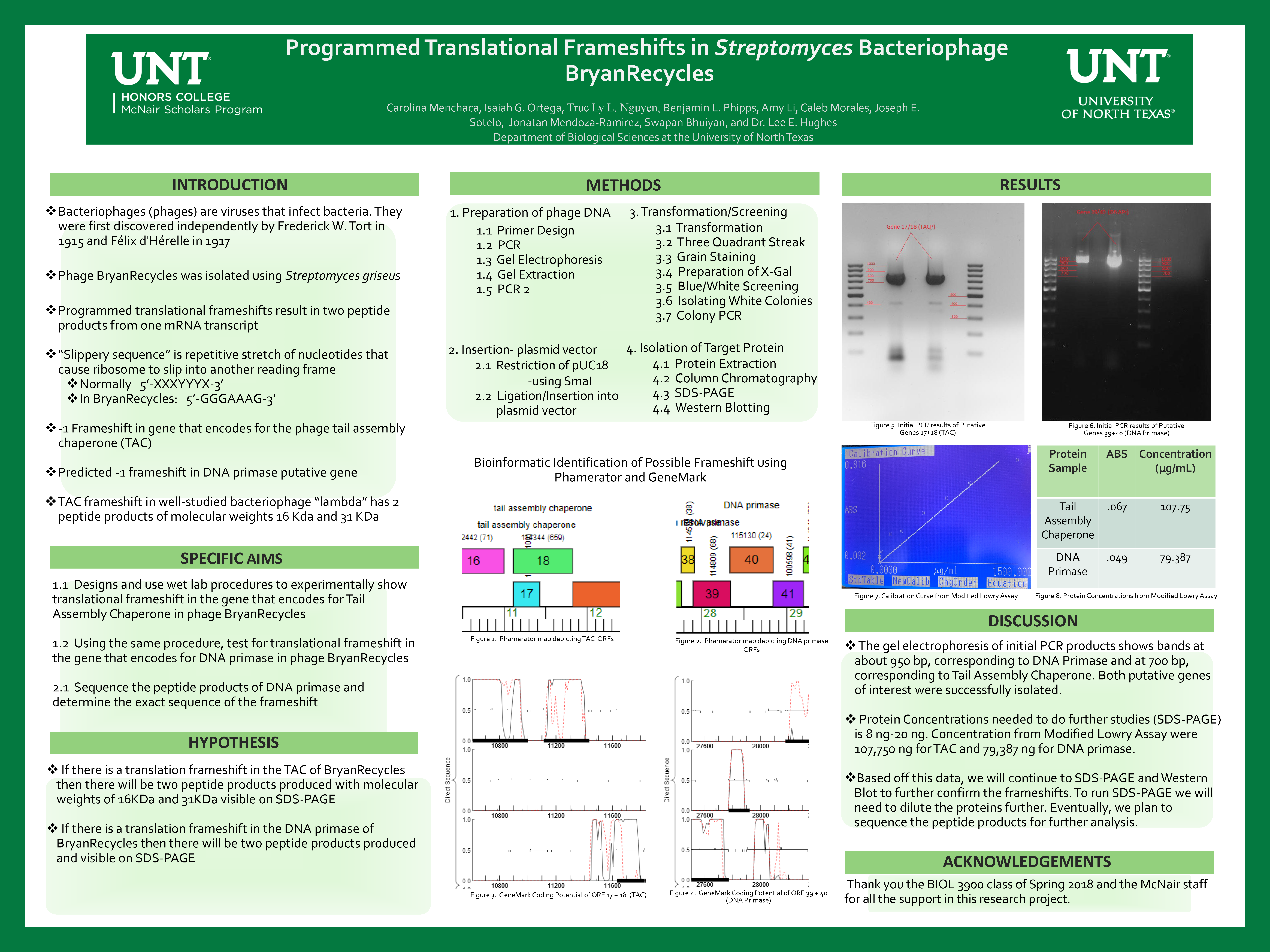First Name:
CarolinaLast Name:
MenchacaMentor:
Dr. Lee HughesAbstract:
Programmed translational frameshifts are naturally occurring phenomena that allow the production of two peptide products from one mRNA transcript. Though translation frameshift may be present in many genomes, Streptomyces bacteriophages have well-studied frameshifts in their tail assembly chaperone (TAC) genes. Production of the TACP gene in BD1 phages is known to result in two products: a short, abundant tail assembly chaperone protein, and a longer version produced at a small rate. The strongest identified regulatory factor of translational frameshifts is the “slippery sequence” which typically follows a 5’-XXXYYYX-3’ structure. The TAC gene’s slippery sequence is well documented as 5’-GGGAAAG-3’ and thus is used to easily find the location of translational frameshifts in the TAC genes of unannotated phages. However, while the TAC gene’s translational frameshift is well documented, possible frameshifts in other phage genes are less understood. BryanRecycles, a cluster BD1 phage discovered in Denton, Texas is a potential candidate for having a potential translation frameshift in its DNA primase gene. We have identified the DNA primase gene as a possible frameshift due to a significant amount of coding potential in a -1 frame starting before the stop codon of the genes, similar to that of TAC. We performed PCR to amplify the target genes, and isolated them via designed primers that would exclude digestion of restriction endonuclease SmaI. We then inserted the TAC/DNA primase PCR products into pUC18 plasmid vector which was introduced to chemically-competent DH5α E. coli via plasmid recombination using pUC18. The proteins were then extracted and purified via column chromatography and have been further analyzed using SDS-PAGE/western blot. We will be using the TAC as a positive experimental control and use the same procedures for isolating and identifying whether or not DNA primase has a translational frameshift. Moving forward, the next step would be to sequence the proteins to further bioinformatically confirm translational frameshifts.Poster:





